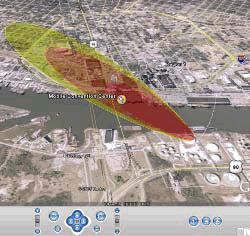Words from a Kaizensider
Wednesday, July 16th, 2008About the author: John DeLashmit began his EPA career over twenty years ago in Chicago. He spent many years working in EPA’s hazardous waste cleanup programs, and now serves as Chief of the Water Quality Management Branch in EPA’s Kansas City office.
We hear its name in the halls and meeting rooms of EPA’s regions and Headquarters: Kaizen, the Japanese process improvement tool. It literally means change (kai) to become good (zen). Kaizen is used by states, feds, and major corporations, such as the Toyota Motor Company, to stay in tune with and provide a better response to changing customer needs. Some of you may wonder what it’s like to go through an Event? Is Kaizen painful, is it dignified, how do you know when it’s over? Do you wear a gi?
I worked with our four Regional states, Headquarters, and my colleagues in the Region at a Kaizen event to “lean” our water quality standard (WQS) review and approval processes in Kansas City. Our Kaizen event took place over four full days last summer. It was quite an experience; we became more enthused about our results as the week went along. The states came armed with diagrams and detailed descriptions of their processes. The Region had no prepared and polished descriptions…we described our procedures, fraught with delay and unnecessary steps, in front of all attending. An ugly process is often described as making sausage; we made our sausage in the window of the butcher shop.
We trimmed (notice that I really like the butcher shop analogy) almost 50% of the steps we’d historically used in our WQS review process, and we eliminated nearly all of the process delays. The refined process we came up with looks much better…on paper. Now, we must implement our ideas and make them work. It’s a new way of doing things, and we realize that there’ll be some frustrations (pain?) while we work to change our old habits.
At EPA, we’re very interested in expanding the use of the Kaizen tool to eliminate waste and delay. I’ll confess…we’re suckers for anything that helps us more efficiently deal with the complexities of regulation, oversight, and our fundamental responsibility to protect the environment. Our Kansas City office will soon use Kaizen to improve our water discharge permitting processes; in the near future, you’ll hear more about Kaizen events in our other regions and Headquarters. We’ll want to share stories about our success…I’ll admit that we’re more than a little proud of what we’re doing.
Just in case my 8th grade English teacher, Miss Osborne, is reading this, I’ll close with a haiku (she would be so impressed):
Kaizen leans our ways
Set a clear course forward
Never hesitate
Linked to http://epa.gov/lean/admin.htm

 The last time I was visiting with my family in Washington I learned that my parents decided to start making canvas shopping bags. They were noticing plastic bags everywhere littering the streets and hanging in the trees, you may have seen this in your local area, and so decided to start making the canvas bags to sell at their local store and to their friends. I have one of their bags and when people ask who made it, I get to proudly share their story of making a difference in the environment.
The last time I was visiting with my family in Washington I learned that my parents decided to start making canvas shopping bags. They were noticing plastic bags everywhere littering the streets and hanging in the trees, you may have seen this in your local area, and so decided to start making the canvas bags to sell at their local store and to their friends. I have one of their bags and when people ask who made it, I get to proudly share their story of making a difference in the environment. At an evening session, I saw a demonstration of something called
At an evening session, I saw a demonstration of something called